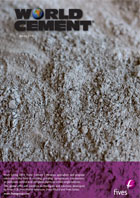Editorial comment
Russia has never exactly been off the international radar, but its presence was particularly felt in 2013. There has been something of a media frenzy surrounding the upcoming Sochi Winter Olympics, which at US$51 billion (five times the initial budget estimate) are already the most expensive Olympic Games in history.
Register for free »
Get started now for absolutely FREE, no credit card required.
All the facilities and infrastructure needed to host a Games had to be built from scratch and it seems poor planning has cost the country unnecessary millions. With national pride at stake and a deadline to meet, the government has thrown good money after bad and in at least two cases has been fleeced to the tune of around US$245 million. (Corruption charges were filed against two construction companies in 2012.) Both Russia’s domestic and foreign policy – most notably its involvement with Syria – have also given us plenty to talk about over the last 12 months. The next year is likely to be more of the same, depending on the outcome of Syria’s peace talks and the success of the Games themselves.
Whatever else has been said about the Games, there can be no doubt that the massive construction projects they’ve spawned sustained Russia’s construction industry for several years. In 2012, the country saw record levels of cement output and consumption. Now that these and other big projects such as the Northern Stream pipeline are largely complete, the economy is faltering and in December 2013 Russia’s Ministry of Economic Development cut the 2014 GDP growth forecast by 0.5% to 2.5%. The IMF is less generous, cutting its growth forecast from 3% to 2%, citing the country’s existing growth model, which relies heavily on oil and gas exports, as a contributing factor in its economic stagnation. Also receiving a mention is Russia’s outdated industrial sector, which is accused of production and labour inefficiencies. In the article from EY beginning on page 36 of this issue, the authors note that more than 70% of the country’s cement production is based on the wet process. Though many modernisation projects have been announced, far fewer have actually been implemented.
It’s not all bad news, though. An article on Forbes.com, ’11 Things Everyone Should Know About Russian Demography’, notes the positive turnaround in mortality rate, population change and birth rates in comparison to the 1990s, during which time Russia appeared to be in what is colloquially termed a ‘death spiral’. Though the author notes that it is likely the country’s population will fall again in the future, he is also keen to point out that things are nowhere near as bad as has been suggested and in general have been steadily improving over the last 10 years. That shows promise. Furthermore, a housing programme is in the works that aims to increase both the availability and affordability of houses in the country – another promising development.
Certainly, challenges lie ahead. Modernisation would be aided by international investment, but investors prefer a stable business environment with strong growth prospects. If you are such an investor, or if you’re curious to see what the markets hold for us in the year ahead, turn to page 30 to read Imran Akram’s article ‘Cement in 2014: Bubble Trouble’, an abridged excerpt from his Cement 2014 report. And if you would like more information about Russia, the CIS and Central & Eastern Europe, read the EY article on page 36.


